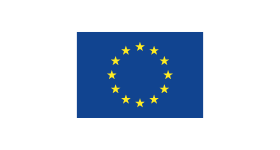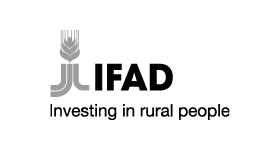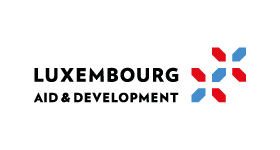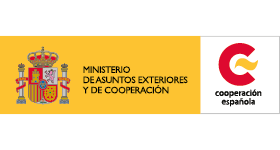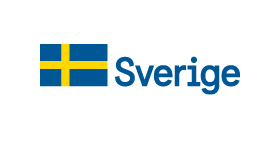Frequently Asked Terms
Themes Dashboard Map – What is the structure of the Themes Dashboard and where can I find indicators on RemitSCOPE?
RemitSCOPE Thematic Dashboards Overview
For your reference, please download the document above for an overview of the structure of the Themes Dashboard. The document also has a list of the indicators available on RemitSCOPE, including the source of the data, and where on RemitSCOPE you can find the data.
What are remittances?
Remittances represent household income from foreign economies arising mainly from the temporary or permanent movement of people to those economies. Remittances include cash and non-cash items that flow through formal channels, such as electronic wire, or through informal channels, such as money or goods carried across borders. They largely consist of funds and non-cash items sent or given by individuals who have migrated to a new economy and become resident there, and the net compensation of border, seasonal, or other short-term workers who are temporarily employed in an economy in which they are not resident. (IMF, 2008). The World Bank publishes data (staff estimates based on IMF balance of payments data) annually on remittance inflows and outflows by country.
Remittance data is usually compiled by the Central Bank and is not easy to collect. The IMF’s Balance of Payments Manual 6 provides guidance on data collection, but data collection frameworks and the quality of data vary considerably across countries. There is currently a drive to improve the quality and availability of remittance data globally as part of the International Working Group to Improve Data on Remittance Flows under the auspices of KNOMAD. In the future RemitSCOPE will aim to provide further insight into the data collection methodology and which components are included in the data (e.g., cash / in-kind and remittances sent through informal channels).
What does Central Bank accreditation mean?
RemitSCOPE asks Central Banks to review and accredit the information available on their Country Profile annually. Central Banks play an important role in providing financial market data and in providing a clear understanding of the operating environment for financial service providers. For the longer-term sustainability of RemitSCOPE, it is necessary for Central Banks to provide data on their respective jurisdictions.
If data on the Country Profile has been reviewed and approved by a Central Bank, then the Central Bank Accreditation toggle at the top of the Country Profile will be highlighted.
What do I do if I see data that is wrong or I have suggestions on how to improve RemitSCOPE?
RemitSCOPE is an ongoing process to develop a “one-stop-shop” for international data on remittances. As such, we welcome your comments to inform our process of continual improvement. Future iterations are planned for regional and national remittance and remittance-related data.
RemitSCOPE Researchers have conducted market research to be able to provide more insight and transparency to remittance markets. However, remittance markets are dynamic and ever evolving. If you are able to provide additional market intelligence and insights, we welcome your comments and inputs to inform our process and commitment to providing up-to-date reliable market intelligence.
RemitSCOPE is built by the remittances community for the remittances community and needs your input and insights to keep it up to date and accurate.
Please share your feedback here.
How do I know when new data comes online?
Please sign-up to RemitSCOPE updates. You will receive notifications via email to alert you to major data updates and new features and functions as they become available on RemitSCOPE.
Follow us on social media (Facebook and Twitter) and sign up to our newsletter to be informed when new data, features and tools are added.
How is the data on RemitSCOPE collected?
RemitSCOPE draws on, and compiles, data from existing open-source databases such as the World Bank remittance inflows and outlfows, UNDESA international migrant stock data, the IMF’s Financial Access Survey, the World Bank’s Remittance Prices Worldwide and Findex and GSMA’s pricing and mobile money metrics. Data is regularly updated to keep data up to date. All data is clearly referenced and dated for transparency. It is recognized that there are weaknesses with some of the existing data; for example, where data is missing and based on estimates, poorly collected and/or based on small sample surveys. Please see the RemitSCOPE Methodology Report for more details.
Where data is not available on key indicators (such as the operating environment and operators and potential partners), data has been collected by a dedicated team of RemitSCOPE Researchers through a mix of desk based and primary research. This is a challenging process for every country, and as markets are continuously evolving, we provide data to the best of our knowledge at the time of data collection. This data is correct to the best of our knowledge at the time of publication and is updated periodically or when RemitSCOPE Researchers become aware of a change. Please use data at your own risk and check against the sources available.
At RemitSCOPE we are continually striving and working with stakeholders across the continent to improve the quality and dissemination of remittance-related data. We welcome any additional information and market intelligence you have to ensure data sources are accurate and up to date.
What are informal remittances and how do I know the value?
Informal remittances are those sent through unlicenced or unregistered means. These flows have typically been cash-based; either in the form of cash physically carried across borders or sent with family and friends, cash given to bus or trusk drivers that are crossing borders, or through unlicenced money transfer providers, including those using the hawala system. Increasingly, informal transfers also take place using digital channels but through unlicenced and unregistered agents or brokers.
By their very nature, informal remittances are undocumented and unrecorded and as such the scale and true value of them is unknown. Across Africa different numbers estimated, with some analysts suggesting that informal remittances could account for as much as 50% of the total amount sent through formal channels. With potentially such large sums involved, remittance service providers, policy makers and regulators are always very keen to get a better handle on what is happening on the ground.
The main way to measure informal remittances is through a representative household survey which is able to estimate the sums sent through informal channels. However, even surveys are not always accurate and often underestimate flows as either people are unwilling to disclose use of informal channels or are unaware that the channel they are using is informal.
Why is there no data on operator market share?
Currently there is no data available in Africa on the market share of remittance service providers at a country or corridor level. Most service providers do not publish their remittance volumes and regulators, even though many collect this data, do not make it publicly available.
Market share data can be difficult to calculate due to the complexity of remittance value chains which often involve a number of different operators across one transaction including MTOs, banks, aggregators, agents, and others; and these relationships vary by different corridors.
There is a call from industry for more transparency around the market share of remittance service providers.
What is the difference between World Bank and Central Bank remittance data?
Methodologies for gathering and analysing remittances data differ across countries and organisations. Many countries derive their remittances data using the Balance of Payments manual developed by the IMF. Some use version 5, and some use version 6, and still others use a mix of both or something else entirely. This information is often based on the reporting requirements the respective central banks have set for commercial banks and and other operators in their market. The World Bank uses this data, when available, as well as other calculations, including migrant stock estimates to calculate the inflows, outflows and corridor level remittances flows. These calculations are based on the World Bank’s own methodology. KNOMAD, who prepare the World Bank remittance flows data answers more questions regarding these differences here.

